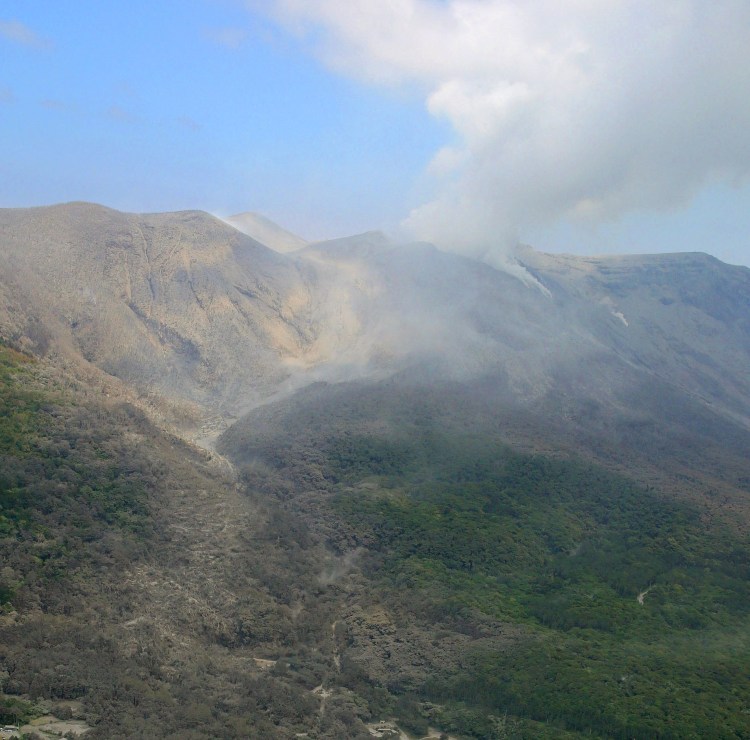TOKYO — A volcano erupted in spectacular fashion on a small island in southern Japan on Friday, spewing out rocks and sending black clouds of ash 5.6 miles into the sky. Authorities told people on the island to evacuate.
One person was reported to have suffered minor burns from falling debris after Mount Shindake erupted, sending dense flows of rock and hot gases seaward, the Japan Meteorological Agency reported.
The injured man, another person who was feeling unwell and a third person were airlifted to nearby Yakushima island, the Fire and Disaster Management Agency said.
Another 133 people were evacuated on a coast guard vessel, a ferry and fishing boats.
“There was a really loud, ‘dong’ sound of an explosion, and then black smoke rose, darkening the sky,” Nobuaki Hayashi, a local village chief, told public broadcaster NHK as he and dozens of others gathered at a shelter before leaving the island.
The agency raised the alert level for Kuchinoerabu island, where Shindake is located, to five, the highest on its scale. Shindake also erupted in August last year for the first time since 1980.
A military helicopter was sent to survey the island and assess damage.
Kuchinoerabu is 50 miles southwest of Japan’s main southern island of Kyushu. A heavily forested, mountainous island bordered mostly by rocky cliffs, it is a national park supported mainly by tourism and fishing.
About two hours after the eruption, NHK showed the mountain shrouded in light gray ash as the clouds from the eruption cleared.
It has little effect on air travel, with no cancellations or major route changes reported.
Kuchinoerabu usually can be reached only by a once-a-day ferry from Yakushima, 7 miles to the east, which has an airport and a population of more than 13,000 people.
Japan, which sits along the Pacific “Ring of Fire,” has dozens of volcanoes and is frequently jolted by earthquakes.
In March 2011, a magnitude-9 earthquake rocked northeastern Japan, triggering a tsunami that killed more than 18,500 people and ravaged much of the northern Pacific coast.
Authorities recently closed part of a popular hot springs about 50 miles from Tokyo because of fears of an eruption of Mount Hakone, which is southeast of Mount Fuji.
The eruption last September of another volcano, Mount Ontake in central Japan, killed 57 people.
Setsuya Nakada, a professor at Tokyo University, told NHK that the eruption on Kuchinoerabu was stronger than Mount Ontake’s.
Since the 2011 disasters, “this sort of activity has continued,” Nakada said, when asked if more eruptions were likely on the island. “Probably the eruptions will continue.”
Send questions/comments to the editors.



Success. Please wait for the page to reload. If the page does not reload within 5 seconds, please refresh the page.
Enter your email and password to access comments.
Hi, to comment on stories you must . This profile is in addition to your subscription and website login.
Already have a commenting profile? .
Invalid username/password.
Please check your email to confirm and complete your registration.
Only subscribers are eligible to post comments. Please subscribe or login first for digital access. Here’s why.
Use the form below to reset your password. When you've submitted your account email, we will send an email with a reset code.